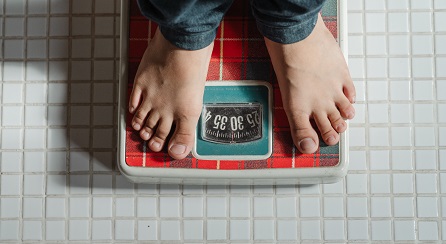
There is a childhood obesity epidemic in America
It is troubling to learn that the national average of children aged 2 to 19 who are obese is 19.7 percent, or 14.7 million people (CDC). Obesity can lead to several health issues in children:
- asthma
- sleep apnea
- type 2 diabetes
- a decline in mental health
- untreated, obesity can lead to heart disease and some cancers (CDC)
Causes of Obesity
Obesity is caused by several factors:
- insufficient sleep
- lack of physical activity
- certain eating patterns
Taking certain medications such as steroids and antidepressants can also lead to weight gain.
Genetics does not play a role in determining one’s likelihood of developing obesity, though social factors do contribute.
Can lack of sleep contribute to obesity?
While the amount of sleep needed to stay healthy decreases with age, most children and teens need at least 8 to 10 hours every night. The Sleep Foundation says sleep deprivation in children can increase the risk of becoming overweight. This increase can stem from hormonal changes and daytime fatigue (leading to decreased activity levels). Later bedtimes can also lead to “consuming more nutrient-poor foods and fewer fruits and vegetables than children who went to bed earlier.” (SleepFoundation.org)
Childhood Obesity and Exercise
Young children aged 3 to 5 need to stay active throughout the day. Children aged 6 to 17 need at least 60 minutes of moderate to vigorous activity every day.
Childhood Obesity and Nutrition
When it comes to food, it is recommended that eating a variety of vegetables, fruits, lean proteins, whole grains, and low-sodium and low-dairy foods is better for the body. Limiting the amount of sugar consumed daily is also beneficial (CDC).
In order to reduce this childhood obesity epidemic, we need to work harder to be sure our children get the proper sleep, exercise and nutrition needed.
Obesity and Low Income
Many healthier foods are more expensive, and having a child join a sports team requires time and money. For these reasons, childhood obesity is more common among those whose families make less income. Across the nation, 24.7 percent of children in the lowest income bracket are obese compared to 9.2 percent of children in the highest income bracket (State of Childhood Obesity).
There is also a racial disparity among those with childhood obesity. Black, Hispanic, and Native American youths have a much higher rate of obesity with all their percentages being in the 20s, while White and Asian children have percentages in the low teens (State of Childhood Obesity).
Childhood Obesity Statistics
When looking at children within the age range of 10 to 17 who are obese, there are seven states that are significantly higher than the national average. All seven states would be considered southern, with the list including West Virginia, Kentucky, Louisiana, Mississippi, Tennessee, Alabama, and South Carolina. The national average for this age range is 17 percent, but South Carolina’s youth obesity rate is 21.6 percent (State of Childhood Obesity). However, South Carolina has been improving over time.
Childhood Obesity Statistics in South Carolina
In 2007, South Carolina’s rate of childhood obesity was 33.7 percent. When looking at data from 2016 and 2017, the rate decreased significantly to within 15 to 20 percent (CNN). While our rate has gone up since the Covid pandemic started, that is the case for several other states as well.
Lifestyle Changes
Though it is important to instill some lifestyle changes at home to help prevent or treat childhood obesity, there is another place where children spend time that also needs changes: school. Since this is where children spend a large portion of their days, it is important to advocate for better wellness programs and better nutritional standards for school lunches. With these changes, South Carolina could make significant strides towards decreasing its rate of childhood obesity.
Contact The Law Offices of David L. Hood for a Free Medical Malpractice Consultation
If you or someone you care about has suffered because of medical negligence, please schedule your free consultation by calling the Law Offices of David L. Hood at (843) 491-6025 or filling out our brief online contact form.
We know how difficult it can be to deal with the immediate and long-term effects of a serious malpractice-related injury. At The Law Offices of David L. Hood, we work hard to make things simple for you. After a free case evaluation, if we believe we can help you and your family, Medical Malpractice Attorney David L. Hood, co-counsel, and our team of experts will vigorously pursue your case to get you the best result we can achieve. Let us put our years of experience to work for you!
*Clients are not liable for any expenses, unless there is a recovery in their case; however, if there is a recovery in their case, clients will be liable for expenses. Attorney’s fees are based on a percentage of the recovery, which will be computed before deducting expenses.




